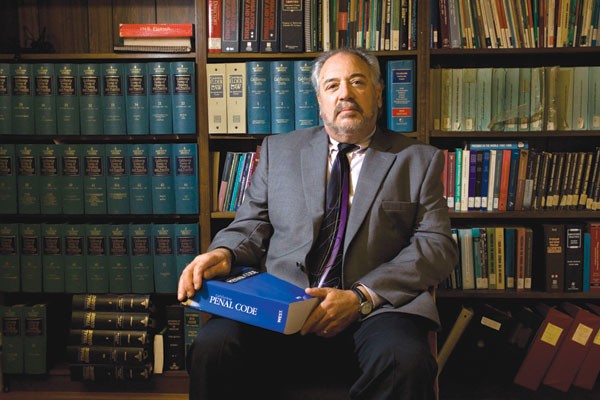It all started with two murders. The tragic cases of Polly Klaas, the 12-year-old Petaluma girl who was kidnapped and murdered by parolee Richard Allen Davis on Oct. 1, 1993, and Kimber Reynolds, an 18-year-old from Fresno murdered in 1992 during a purse-snatching incident, galvanized the “tough on crime” agenda in California. In response, voters in 1994 approved Proposition 184, established to put violent career criminals behind bars for life.
But in the nearly 20 years since “three strikes” went into effect, many nonviolent offenders have been swept up in an overreaching, anti-crime net.
“We need prisons for people who prey upon society,” says John Abrahams, a retired Sonoma County public defender who supports Proposition 36, a November ballot initiative that would reduce prison sentences served by qualified third-strikers whose current offense is a nonserious, nonviolent felony. “We don’t need to lock up people for life who steal pizza or bicycles from garages, or drug offenders, things like that.”
Drafted by lawyers at the NAACP Legal Defense Fund and the Stanford Law School, the initiative is modeled after successful “three strikes” sentencing policy implemented in Los Angeles County by District Attorney Steve Cooley. The Legislative Analyst’s Office estimates that Proposition 36 would save the state approximately $70 million a year in the beginning and $90 million yearly after that.
Currently, there are 140,000 inmates in state prisons; 33,000 of those are second-strikers and 9,000 are third-strikers. Under Proposition 36, 2,800 third-strikers would be eligible for re-sentencing, potentially reducing their prison sentences from life in prison. Excluded from the measure are those whose previous crimes involved sex offenses, drug trafficking, homicide, firearms or weapons of mass destruction.
Those fighting for “three strikes” reform say that an aging prison population is taxing the prison system, since prisoners over the age of 50 tend to have higher medical needs. The 2011 U.S. Supreme Court ruling that crowded conditions in California prisons amount to “cruel and unusual punishment” has compounded the crisis.
[page]
Racial disparity in court sentencing is another area of concern, according to Elsa Chen, an associate professor of political science at Santa Clara University. At a Sept. 19 legislative hearing, Chen said that although African-Americans make up just 6.2 percent of California’s population, they make up 34 percent of second-strikers and 44 percent of third-strikers. African-Americans have a 47 percent higher chance of receiving third-strike sentencing than Caucasians.
This disparity often originates at the county level, where the district attorney and judges have prosecutorial and judicial discretion over who receives a strike and who doesn’t.
The opposition to Proposition 36 includes the California District Attorneys Association, the Peace Officers Research Association and Crime Victims United. Marc Klaas, father of Polly Klaas and founder of the KlaasKids Foundation for Children, says that while he initially thought “three strikes” was too broad, his concerns have been addressed in multiple ways.
“‘Three strikes’ is not about the final offense,” says Klaas. “‘Three strikes’ is about criminal history. Each of those individuals had a choice in their life, knowing full well that if they committed another crime they would find themselves in prison for life, but they chose to commit the crime anyway.”
Klaas says the implementation of “three strikes” comes down to the ability of prosecutors to analyze the defendant’s history and determine how to prosecute. This is a system that works, he says. “The only reason for a person to vote for Proposition 36 is if they believe the criminal justice system has broken down,” adds Klaas.
Steve Fabian, a Santa Rosa criminal defense attorney, says that, on the contrary, the criminal justice system is in crisis. He has concerns about the aging striker population. No “three strikes” offenders have been paroled since the law went into effect in 1994.
“When you get old, the likelihood of recidivism starts dropping dramatically,” he says. “We’re warehousing people who are unlikely to commit more crimes. That’s forcing the release of young people who are more likely to commit crimes. How much do we want to spend to lock up someone who’s never committed a violent crime versus having rehabilitation programs?”
If Proposition 36 becomes law, violent criminals like Richard Allen Davis would not qualify for re-sentencing.
“California has the strictest and harshest ‘three strikes’ law in the country,” says Fabian. “The proposition is a minor fine-tuning of the law. If it passes, California would still have the strictest ‘three strikes’ law. It won’t overturn everything, but it will make changes.”
Sonoma County District Attorney Jill Ravich moderates a forum on propositions 34 and 36, with Steve Fabian, Marc Klaas and others on Sunday, Oct. 14, at Congregation Shomrei Torah, 2600 Bennett Valley Road, Santa Rosa. 3pm. Free. 707.578.5519..











